Early Spring 2023 Snapshots From Extension’s Pollinator Paradise Garden
go.ncsu.edu/readext?937467
en Español / em Português
El inglés es el idioma de control de esta página. En la medida en que haya algún conflicto entre la traducción al inglés y la traducción, el inglés prevalece.
Al hacer clic en el enlace de traducción se activa un servicio de traducción gratuito para convertir la página al español. Al igual que con cualquier traducción por Internet, la conversión no es sensible al contexto y puede que no traduzca el texto en su significado original. NC State Extension no garantiza la exactitud del texto traducido. Por favor, tenga en cuenta que algunas aplicaciones y/o servicios pueden no funcionar como se espera cuando se traducen.
Português
Inglês é o idioma de controle desta página. Na medida que haja algum conflito entre o texto original em Inglês e a tradução, o Inglês prevalece.
Ao clicar no link de tradução, um serviço gratuito de tradução será ativado para converter a página para o Português. Como em qualquer tradução pela internet, a conversão não é sensivel ao contexto e pode não ocorrer a tradução para o significado orginal. O serviço de Extensão da Carolina do Norte (NC State Extension) não garante a exatidão do texto traduzido. Por favor, observe que algumas funções ou serviços podem não funcionar como esperado após a tradução.
English
English is the controlling language of this page. To the extent there is any conflict between the English text and the translation, English controls.
Clicking on the translation link activates a free translation service to convert the page to Spanish. As with any Internet translation, the conversion is not context-sensitive and may not translate the text to its original meaning. NC State Extension does not guarantee the accuracy of the translated text. Please note that some applications and/or services may not function as expected when translated.
Collapse ▲In late 2008, I planted a demonstration pollinator garden at Chatham Mills to provide forage from early spring to late fall for pollinators such as honey bees, native bees, butterflies, flower flies, hummingbirds, beetles, and other beneficial insects. The garden features over 225 unique species of perennials, 85% of which are native to North Carolina. The garden is a great teaching tool that I use to conduct workshops and tours for hundreds of folks each year. It has taught me so much and I enjoy sharing this knowledge with others. Below you can see photos of the pollinator garden from early April through mid-May. There are over 60 species in bloom in mid-May!

Wild pink, also called sticky catchfly among other things (Silene caroliniana). Photo by Debbie Roos.

Close-up of wild pink. Photo by Debbie Roos.

Wooly Dutchman’s pipe (Aristolochia tomentosa). This is the host plant for the pipevine swallowtail butterfly. Photo by Debbie Roos.

I spotted the first black swallowtail caterpillar of the year in mid-April on its native host plant, golden alexander (Zizia aurea). Photo by Debbie Roos.
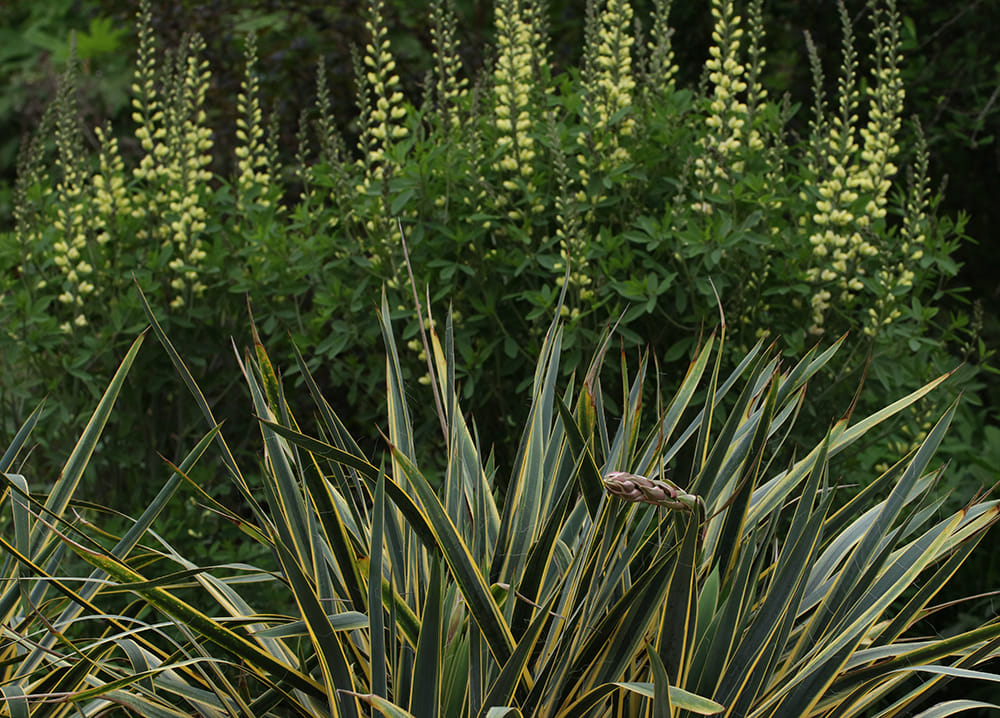
‘Carolina Moonlight’ Baptisia with yucca (Yucca filamentosa ‘Color Guard’) in the foreground. Photo by Debbie Roos.

Golden alexander (Zizia aurea) with downy phlox (Phlox pilosa). Photo by Debbie Roos.

Narrow-leaf Carolina phlox (Phlox carolina spp. angusta) in front of wild indigo. Photo by Debbie Roos.

Wild indigo (Baptisia x ‘Carolina Moonlight’) with golden alexander (Zizia aurea), yarrow (Achilles millefolium ‘Paprika’), and spiderwort (Tradescantia). Photo by Debbie Roos.
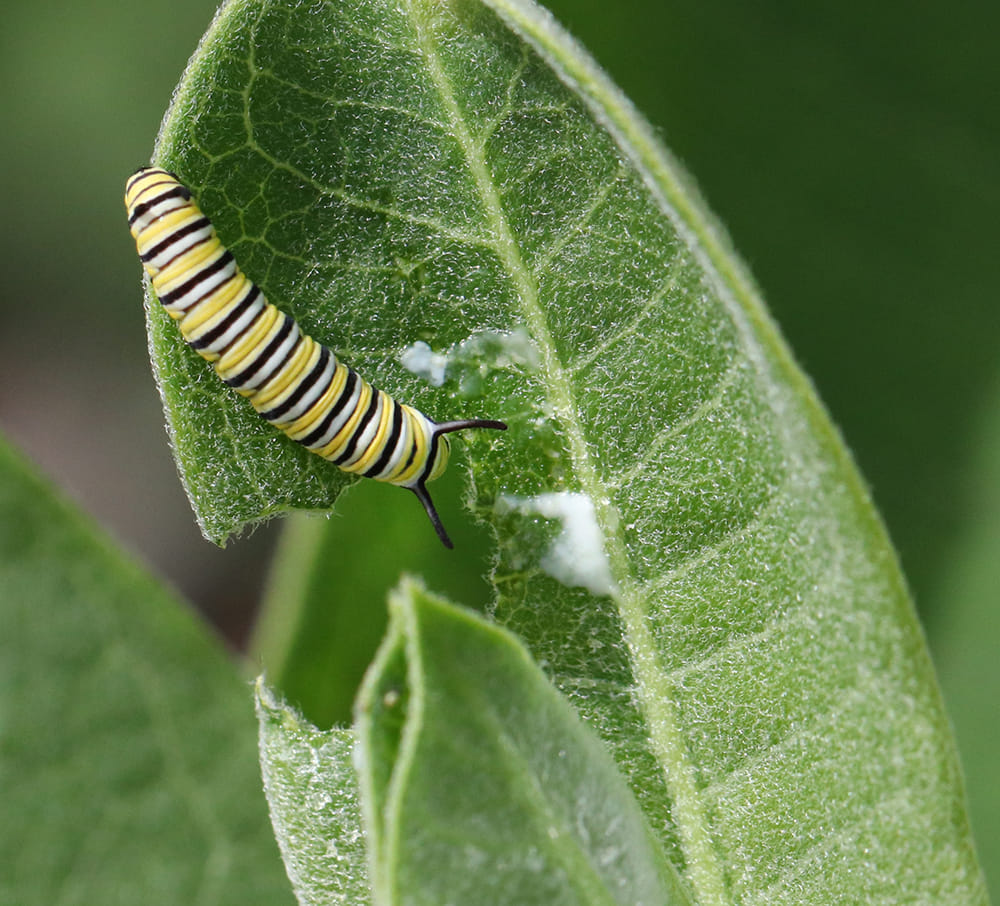
The first monarch caterpillar of the year was spotted in late April on common milkweed. Photo by Debbie Roos.

This leafcutter bee was foraging on dwarf wild indigo (Baptisia minor). She enjoys her nectar reward, gently balancing on the anthers which transfer pollen to the branched hairs on the underside of her abdomen. Photo by Debbie Roos.

Jumping spider on ‘Paprika’ yarrow (Achillea millefolium). Photo by Debbie Roos.

One of my favorite bee balms…wild bergamot (Monarda bradburiana). It prefers partial sun. Photo by Debbie Roos.
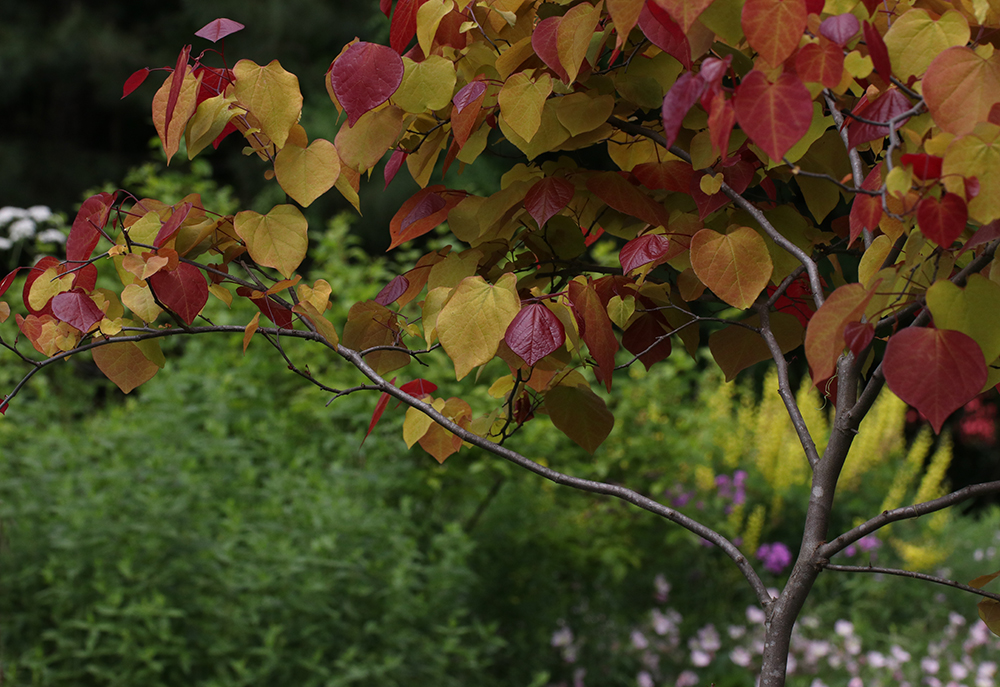
‘Flamethrower’ redbud (Cercis canadensis ‘Flamethrower’). This variety was developed by NCSU Horticulture Professor Dennis Werner. Each week multiple visitors stop me in the garden and ask about it. The foliage color is just stunning! Photo by Debbie Roos.

Buttonbush, Carolina narrow-leaf phlox, wild indigo, eastern bluestar, and evening primrose. Photo by Debbie Roos.

Bumble bee foraging on wild indigo. Photo by Debbie Roos.

American lady caterpillar on its host plant, pussytoes (Antennaria plantaginifolia). Photo by Debbie Roos.

Piedmont Barbara’s buttons (Marshallia obovata) with downy phlox (Phlox pilosa). Photo by Debbie Roos.

White wild indigo (Baptisia alba) and Carolina lupine (Thermopsis villosa). Photo by Debbie Roos.

Leafcutter bee foraging on mountain Indian-physic (Gillenia trifoliatus)! Photo by Debbie Roos.

Lady beetle larva feeding on oleander aphids on common milkweed (Asclepias syriaca). Photo by Debbie Roos.

I’m pretty infatuated with white wild indigo (Baptisia alba). Photo by Debbie Roos.
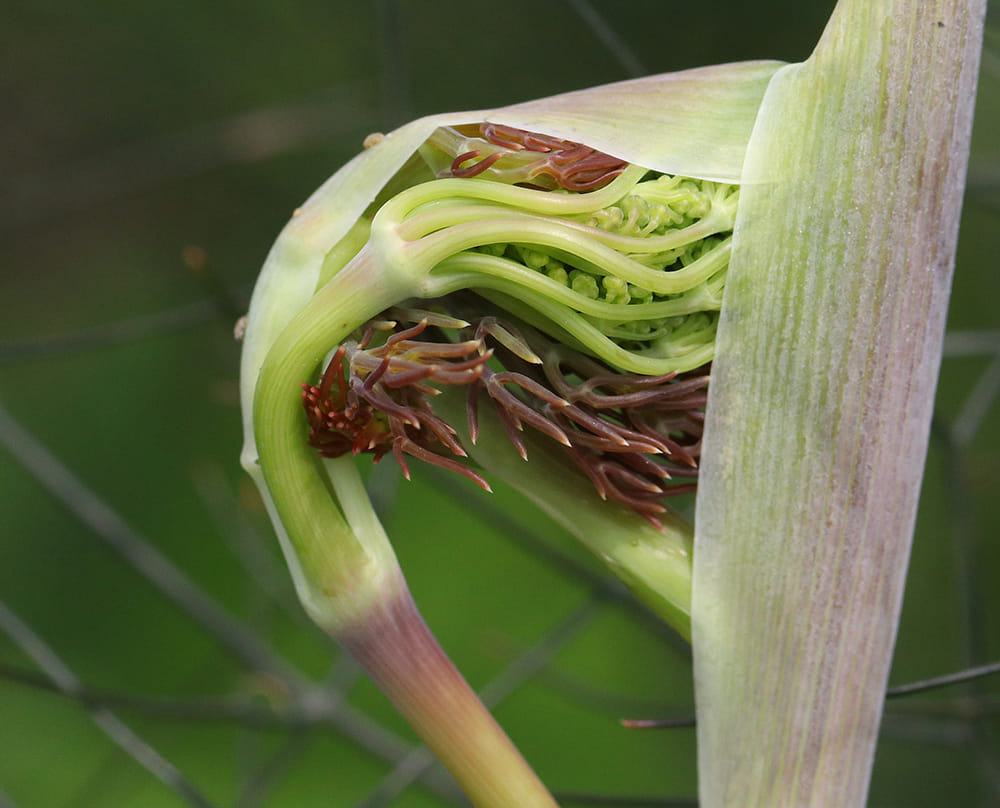
I’ve always been drawn to the bronze fennel (Foeniculum rubrum) flower buds unfurling…otherworldly beauty! Photo by Debbie Roos.

Purple coneflower (Echinacea purpurea). Photo by Debbie Roos.
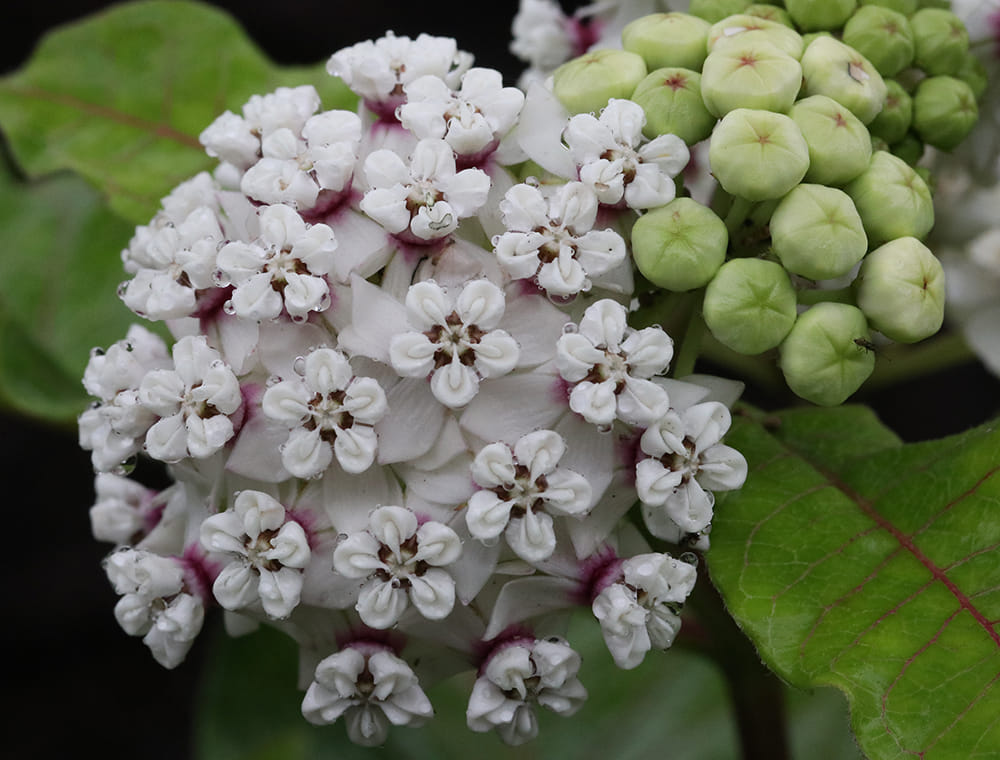
The appropriately named redring milkweed (Asclepias variegata). Photo by Debbie Roos.

Raindrops on curlyheads (Clematis ochroleuca). Photo by Debbie Roos.
For more information:
Pollinator Paradise Garden website
What’s in Bloom in the Pollinator Garden – updated bi-weekly!


